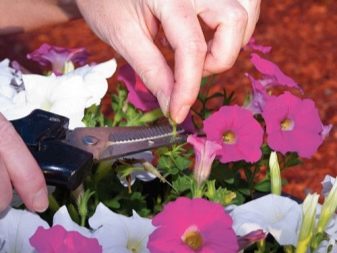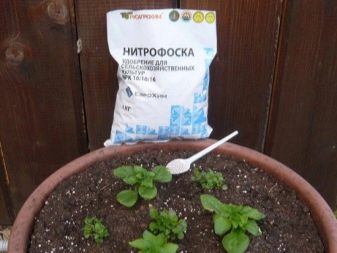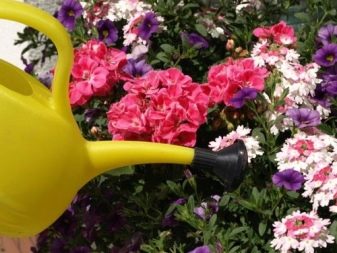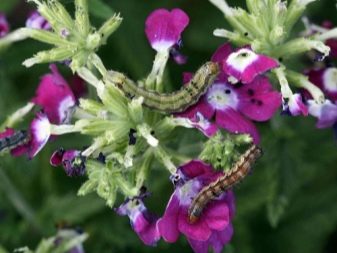We grow and care for the right way
Seeds are planted from late February to early March. Selected seeds are sown in seedling boxes or cups, in a ready-made sterile substrate. You do not need to cover the seeds with a substrate, they should remain on the surface
It is very important to constantly moisturize the substrate so that it does not dry out. Usually, the first shoots appear after 1.5-2 weeks, the optimal temperature for germinating seeds is +18 +20 degrees
If the seeds were planted in February, then from March to April, you can begin to dive young seedlings. The temperature for subsequent cultivation should remain the same. But from April, when there are already several leaves on the seedlings, it can be transplanted into small pots in which it will grow until it is planted in the ground. Usually, young seedlings should be about 3 months old before planting in the ground.
As a top dressing, you can use complex mineral fertilizers, which can be purchased at gardening stores.
It is very important to remove old and dried inflorescences in time so that new ones grow. Watering adult petunias should be moderate, but not too abundant.
Pinching petunias is optional.
Personal experience of growing pethoa
Amazing unnamed "petunias" delighted me all summer. And at the end of the season, I set out to find out in more detail what kind of cultivars grew on my balcony. They were the most profusely blooming, most tireless, persistent and most amazingly colored "petunias" I have ever grown. A search through the catalogs of vegetative petunias showed that the plants I grew were the last word in petunia breeding. At the same time, it is a fundamentally new plant bearing the unusual name of pethoa.
On my balcony, I grew three varieties of Pethoa: BeautiCal French Vanilla (yellow), BeautiCal Caramel Yellow (orange) and BeautiCal Cinnamon (red-brown). I bought the plants in small cuttings, and over the summer they have grown a decent green mass. The flowering was very abundant, and I did not notice any interruptions in flowering in the pethoa (unlike many petunias that bloom in waves). I also never had a desire to cut them, because no "baldness" or pulling out bushes was observed.
Like petunia, pethoa bloomed until frost, but at the same time, unlike the first, with the onset of autumn, the flowering remained just as abundant, and the bushes were densely covered with flowers, almost like in summer.
Caring for pethoa was no different from cultivating the usual petunias: the plants grew in hanging baskets filled with a ready-made peat-based substrate for flowering plants. Additionally, when planting, granules of specialized "long-playing" fertilizers were introduced into the soil.
Throughout the season - regular watering plus top dressing with a soluble complex mineral fertilizer approximately once a week. Pethoa is definitely as voracious as petunia and needs a strict fertilization schedule. No disease or pest infestation was observed in Pethoa. In short, I was more than pleased with this new product, because all summer I never ceased to admire the vitality and unique color of its flowers. Therefore, I wanted to learn more myself and tell you about this amazing "petunia".
Caring for petchoa (Petchoa) is no different from the cultivation of familiar petunias. Lyudmila Svetlitskaya
Care
It is most difficult to grow healthy petunias in regions where there is not enough sun, as they are very demanding on it.The presented species needs at least 6 hours of exposure to direct sunlight every day for the plant to bloom well in the flower bed.
Outdoor, sunny areas, away from large trees and buildings, or south-facing areas are best suited for planting. Although petunias can grow in shade or with little light, the grower should not expect abundant flowering under these conditions.
This flower grows well in almost any type of soil, as long as there is good drainage. In a flowerbed, when planting in loam, you can simply add river sand.
Petunias are plants that require additional monthly nutrition during the entire spring-summer growing season. Experienced growers recommend using balanced fertilizers for best results. But do not overfeed the flower, otherwise it will spend energy not on creating buds, but on building up green mass.
When grown outdoors, cascading and other petunias should only be watered once a week. Indoors, these plants need more frequent moistening of the soil. Check the surface of the soil once a day for the level of moisture and water it with water at room temperature, if the soil is already dry by a few centimeters. Allow time for excess glass moisture to enter the container from below, then empty it.
Healthy indoor petunias are quite fertile and do not shed old flowers. They will need to be pruned additionally at least once a week to keep the bush neat and to encourage new bud growth. Petunia stems also often grow too long by mid-summer, so they are pruned.


Over time, you have to deal with pests, as well as fungal infections. The most common insect a gardener encounters is the mid-summer caterpillar. It is not easy to see, but it actively eats leaves and flower buds, punching holes in them and leaving behind black excrement.
It is best to use an organic pesticide that will paralyze the caterpillar but will not harm other pollinating insects and animals. Petunias do not bloom well when they get wet
For this reason, watering should be done carefully and only at the root.
These flowers are highly susceptible to fungal viruses, resulting in yellow variegated leaves and misshapen shoots.


Valuable species
One of the most valuable varieties is the super-cascading white petunia. It is a low-growing variety, consisting of long flexible stems with fairly large flowers that resemble bells up to 11 cm in diameter. This species is grown through seedlings. Sowing is carried out in February-March, depending on the region. It takes up to three months from sowing seeds to planting seedlings in the ground. Based on this, the timing of garden work is calculated.
There is a petunia from the same lilac line.
All seeds in the series are sold in the form of granules for easy sowing. The disadvantages of this type, based on the reviews, include the need to maintain a balance of moisture and heat so that the substance surrounding the seed does not prevent the germ from breaking through.
Growing features
Correct planting and caring for plants makes it possible to obtain full and long flowering, as well as the availability of the necessary material for the propagation of the culture next year. If we talk about caring for the ampelous variety of petunia, then it is worth noting that the duration of its flowering increases due to the creation of optimal conditions for the flower.
The most correct capacity will be a hanging planter, which allows the plant to fully grow and bloom, while in standing containers the middle part gradually begins to thin out, which affects the visual attractiveness of the bush.
Planting the ampelous variety and subsequent care looks like this.
The seed sowing procedure should be carried out in the spring.Small-flowered varieties begin the flowering process 10 weeks after planting, and large-flowered varieties - 12.
The most suitable soil will be nutritious and loose soil, which is moistened before planting, drainage is laid out on the bottom.
For proper seed growth, before planting, they should be soaked in a solution of potassium permanganate.
Sowing of this variety is sparse. The temperature regime should be + 20-25 degrees. After about 10 days, shoots should appear - if this did not happen, then mistakes were made in the sowing procedure.
When a seedling has more than 3-4 leaves, it must be planted in a pot, where it will grow. For an ampel variety, it is considered normal to place several plants in one pot.
To quickly adapt to a new place, it is necessary to fertilize a young plant with complex fertilizers applied once a month. To achieve an abundance of flowers, you need to make potassium and magnesium solutions.
The care process consists in timely watering and loosening of the soil
Petunia loves moisture, so you need to water it daily, and in the hot season you can do this procedure twice a day.
In order for the plant to bloom luxuriantly and for a long time, it is important to immediately remove all dried buds.
To plant an ampelous petunia in the open air, it is worth choosing a sunny and quiet place, without drafts.
As for sowing a cascade variety and subsequent care, they consist in the following activities:
- sowing seeds should be done in February or March;
- the container for the flower must be prepared: expanded clay is placed on the bottom, then the soil, consisting of a mixture of soil and sand;
- the sowing procedure is sparse, the container is covered with a film or glass, aired once a week;
- several young bushes are planted in one pot, which need to be pinched for active growth of the stem;
- the landing site in the ground should be sunny, preferably calm;
- watering is stable, especially in hot weather.


